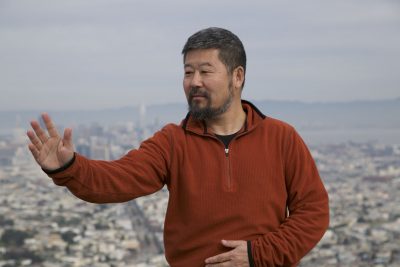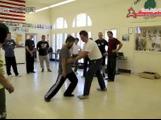“No Move” is the cornerstone of Chen Zhonghua’s Practical Method Chen Style Taijiquan. It is the final stage of the six-word secret of Practical Method training steps [open the kua, rotate, don’t move]. There are many meanings and execution methods of No Move.
No Move can be divided into three categories:
No Move 1. It is [real no move] like a screw fixed on the floor. The mountain is not moving, the ground is not moving, and the house is not moving. When practicing forms, when you come to a fixed posture, your feet are not moving. You must be able to keep your feet, hands, and head still, and only move these five points (five points struggling outwards). Only moving the inside is the highest requirement of Practical Method. Of course, it can be seen that this is almost impossible! Let’s focus on one specific movement. We can first practice shoulder no move: in with elbow, the shoulder is No Move type 1.
This type of No Move is collectively called [real no move].
No Move 2: The second is the movement that does not derail like a train on the track. The middle handle of the by-folding door seems to be able to move freely, and the no move that runs along the air track without a physical track is also the case. This is moving with a trajectory.
Satellites revolve around the earth in the orbit, and this kind of movement is no move. Rockets running along a set trajectory in the air is also called no move.
In the specific movements of Practical Method, in with elbow, the elbow is No Move type 2. The movement of the elbow is an active movement with leading force, which we collectively call it [no move].
No Move 3: Three is that you sit on the train without moving, but you quickly arrive in Beijing from your hometown station. This is a relative movement. The earth revolves around the sun every day, but we live on the earth and don’t know it, which is also a kind of no move. In with elbow, the hand is No Move type 3, which we collectively call it [no self-move]
From a local perspective, every time we do a movement, we must first distinguish which part of our body is this movement from. Then determine the three specific body parts of No Move 1, No Move 2, and No Move 3 in this part.
The same terms are:
Don’t move
Not moving at all
Don’t move at all
Really don’t move
Can’t move at all

Original post in Chinese by Master Chen Zhonghua. Translation-Yuxin Liu


